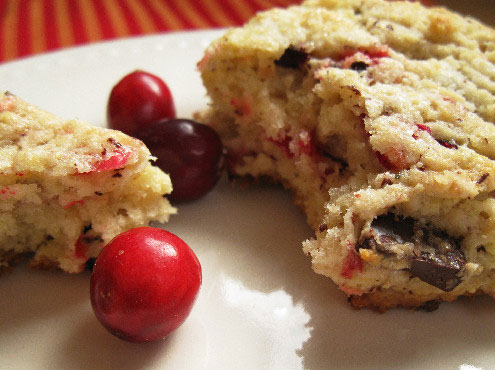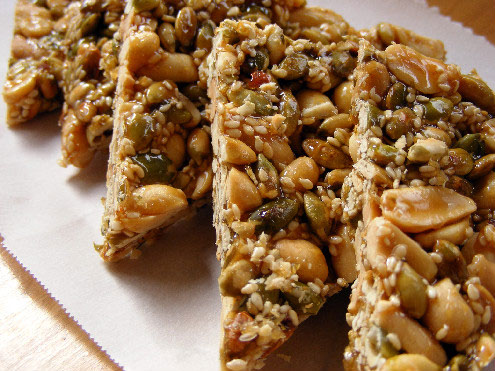Cranberry: Fresh Cranberry Chocolate Scones
Sunday, November 21st, 2010This time of year I take advantage of the access to fresh cranberries by subbing them for the dried or jellied versions when possible. This recipe for fresh cranberry chocolate scones is an adaptation of my standard scone recipe that I usually use with dried fruit – currants, golden raisins, cherries, or dried cranberries.
Scones originate with the culinary fare of Scotland, Ireland and England and are linked to the Welsh tradition of cooking small yeast cakes on bake stones and griddles.
Although scones are not a part of the usual Thanksgiving fare, they certainly are lovely with a cup of tea or coffee any time of day.
Did I mention that traditionally scones are not laden with lots of sugar? For American taste buds, think more about the sweetness of a biscuit rather than those sweet, frosting covered scones found at the market and coffee shops.
Originally, scones were made with oats, shaped into a large round that was cut into wedges. More often these days, classic scones are made with flour and use currants or raisins and are eaten plain or smeared with clotted cream or preserves.
This version capitalizes on fresh, tart cranberries and also calls for chocolate – a combo I adore. I eat them plain – no extra cream, preserves or butter.
One other fact I must mention, scones are best when freshly baked. The recipe below makes a dozen or 14 wedges. If you want to freeze some to bake later, see the instructions about flash-freezing below.
Tidbits on Cranberries:
- Cranberries are closely related to blueberries, lingonberries and cowberries.
- Cranberries are tested for firmness by their bounce, which explains why they are also referred to as “bounceberries.” Those that do not bounce are discarded.
- Cranberries stay fresh longer than other berries because they have a waxy skin.








